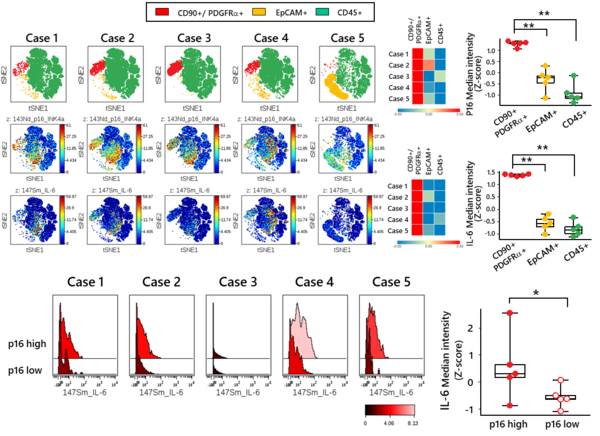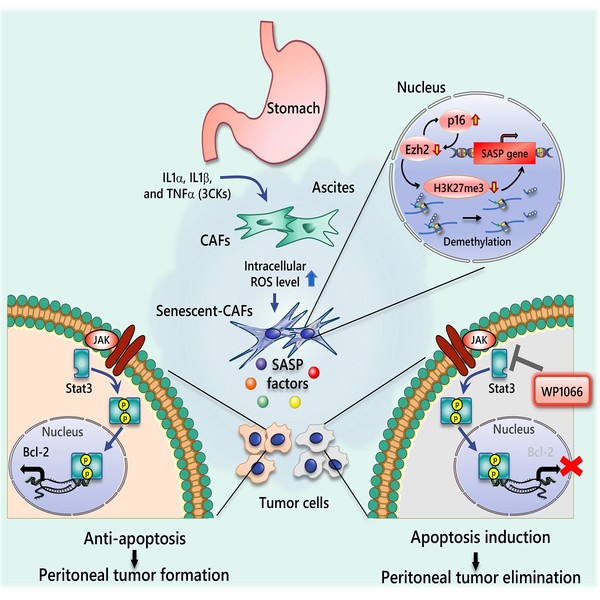- HOME
- News & Events
- Publications
- 【Publications】Inflammation-driven senescence-associated secretory phenotype in cancer-associated fib...
Publications
【Publications】Inflammation-driven senescence-associated secretory phenotype in cancer-associated fibroblasts enhances peritoneal dissemination
February 26 2021
Lab: Takatsugu Ishimoto
Paper information
Yasuda T**, Koiwa M**, Yonemura A, Miyake K, Kariya R, Kubota S, Yokomizo-Nakano T, Yasuda-Yoshihara N, Uchihara T, Itoyama R, Bu L, Fu L, Arima K, Izumi D, Iwagami S, Eto K, Iwatsuki M, Baba Y, Yoshida N, Ohguchi H, Okada S, Matsusaki K, Sashida G, Takahashi A, Tan P, Baba H*, Ishimoto T*.
(*corresponding authors, **equally contributed)
Title
Inflammation-driven senescence-associated secretory phenotype in cancer-associated fibroblasts enhances peritoneal dissemination
Cell Reports 2021 Feb 23;34(8):108779.
doi: 10.1016/j.celrep.2021.108779.
Highlights
- EZH2 downregulation leads to SASP maintenance through depletion of H3K27me3 marks
- Senescent CAFs in ascites of GC patients with peritoneal dissemination exhibit SASP
- Senescent CAFs enhance the peritoneal tumor formation through JAK/STAT3 signaling
- A JAK inhibitor blocks peritoneal tumor formation driven by systemic inflammation
Abstract
In the tumor microenvironment, senescent non-malignant cells, including cancer-associated fibroblasts (CAFs), exhibit a secretory profile under stress conditions; this senescence-associated secretory phenotype (SASP) leads to cancer progression and chemoresistance. However, the role of senescent CAFs in metastatic lesions and the molecular mechanism of inflammation-related SASP induction are not well-understood. We show that pro-inflammatory cytokine-driven EZH2 downregulation maintains the SASP by demethylating H3K27me3 marks in CAFs and enhances peritoneal tumor formation of gastric cancer (GC) through JAK/STAT3 signaling in a mouse model. A JAK/STAT3 inhibitor blocks the increase in GC cell viability induced by senescent CAFs and peritoneal tumor formation. Single-cell mass cytometry revealed that fibroblasts exist in the ascites of GC patients with peritoneal dissemination, and the fibroblast population shows p16 expression and SASP factors at high levels. These findings provide insights into the inflammation-related SASP maintenance by histone modification and the role of senescent CAFs in GC peritoneal dissemination.
Representative Figure (Click for a larger image)
Graphical Abstract (Click for a larger image)


